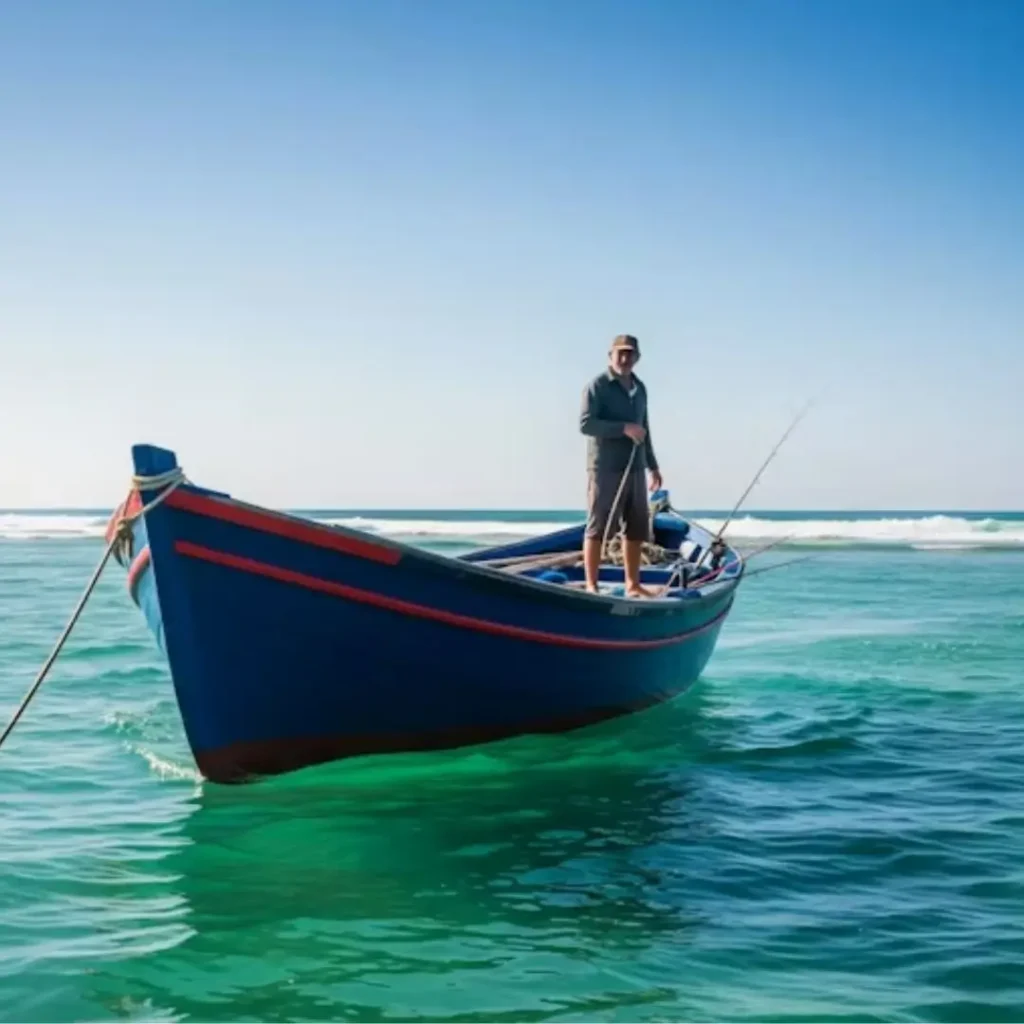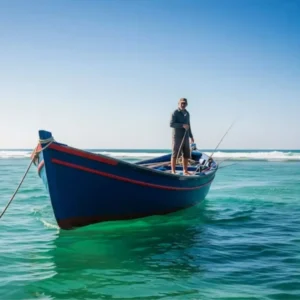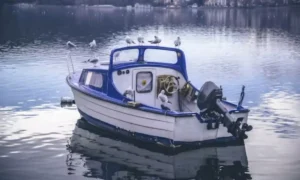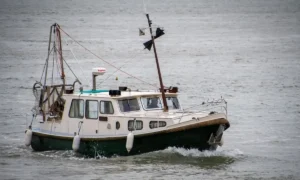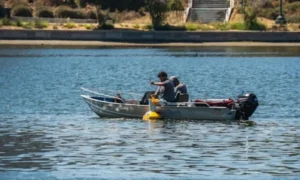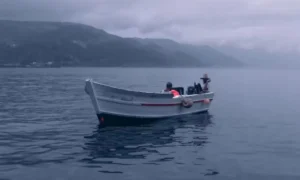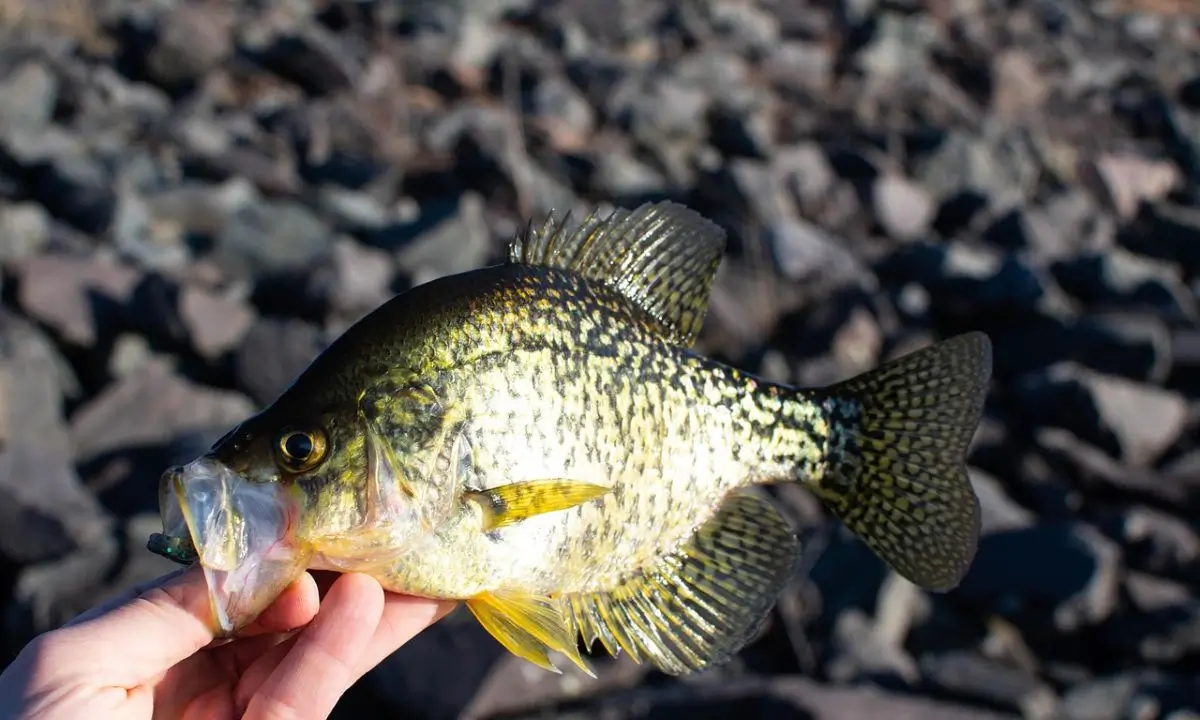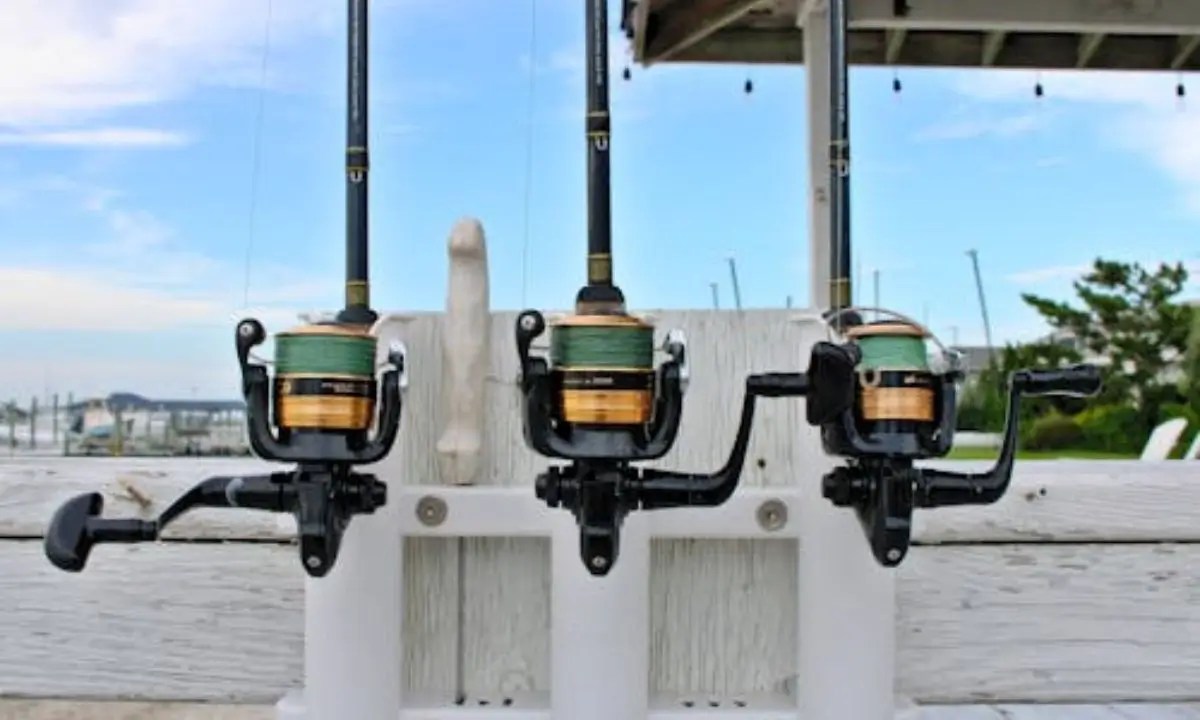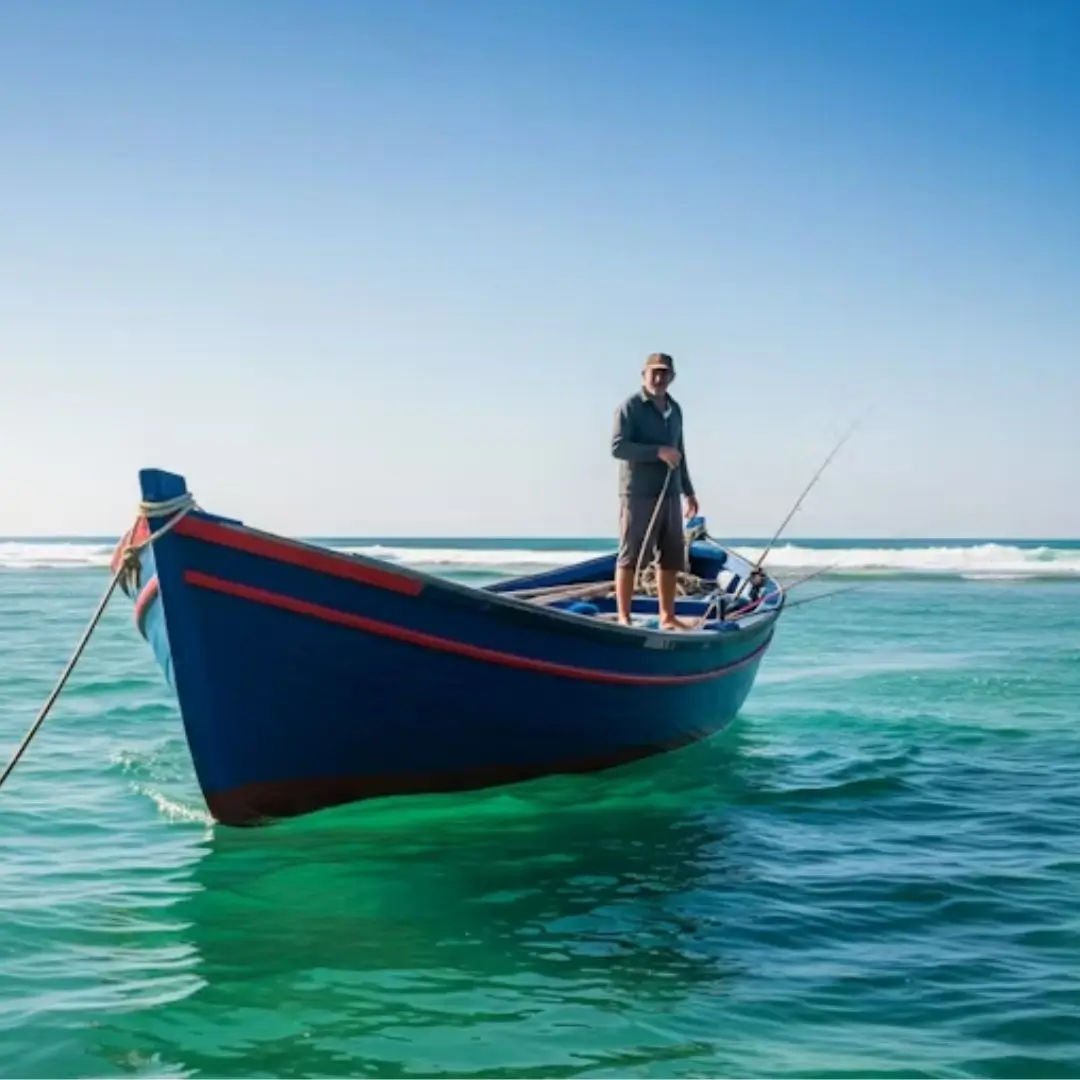Introduction:
How should you pass a fishing boat? Always slow down, keep a safe distance, and pass on the starboard (right) side unless directed otherwise. Keep your boat at a consistent speed, steer clear of making waves, and always be mindful of fishing lines already in the water.
Passing a fishing boat safely is one of the most important skills for any angler or boater. Not only does it protect your boat and gear, but it also ensures the safety of everyone on the water. Always slow down as you approach a fishing boat and maintain a safe distance to avoid startling the anglers or creating unnecessary waves. Passing on the starboard (right) side is generally recommended unless the fishing boat signals otherwise. Keep a steady speed, avoid sudden maneuvers, and watch out for fishing lines or nets in the water.
Being cautious and respectful not only prevents accidents but also shows good boating etiquette. Following these simple but essential rules can make your fishing trips more enjoyable and stress-free, allowing you to f
Focus on the fun of fishing rather than worrying about safety.
Step-by-Step Guide for Passing Safely
Passing a fishing boat safely is easier when you follow simple steps. First, slow down as you approach and check for any lines or nets in the water. Keep a safe distance, usually a few boat lengths, to avoid disturbing anglers. Always pass on the starboard (right) side unless the fishing boat signals otherwise. Maintain a steady speed and avoid sudden turns or waves that can affect the smaller boat’s stability. Use hand signals or horn if needed to communicate your intentions. Observe the boat’s movement and give extra space in narrow channels or busy areas. By following these clear steps, you ensure safety for everyone and enjoy a smooth, stress-free boating experience. details Big fish boat
Why Proper Passing Matters
Knowing how to pass a fishing boat safely is not just a matter of courtesy—it’s essential for the safety of everyone on the water. Proper passing helps prevent accidents that can damage boats, fishing gear, or even cause injuries. Anglers often have lines and nets in the water, which can easily get tangled if a passing boat is too close or moving too fast. Maintaining a safe distance and following standard passing rules shows respect for other boaters and enhances the overall boating experience. Additionally, following correct procedures minimizes waves and wake, which can disrupt fishing or cause smaller boats to become unstable.
By understanding the importance of careful passing, boaters can enjoy safer, more enjoyable trips while fostering a respectful and responsible boating culture.
Why is it important to know how you should pass a fishing boat?
Passing a fishing boat may look simple, but if you get it wrong, accidents, tangled fishing lines, or even collisions can happen. That’s why boating authorities, including the U.S. Coast Guard and boating safety courses like Boat Ed and Learn to Boat, emphasize this rule in training. If you ever search “how should you pass a fishing boat quizlet” or similar questions, you’ll see that the answer is consistent — pass with caution, maintain space, and know who has the right of way Best Tips for Storing Fishing Rods.
Common Mistakes to Avoid
Even experienced boaters can make errors when passing a fishing boat. One common mistake is getting too close, which can startle anglers and damage fishing lines. Another is speeding or creating large waves, which may destabilize smaller boats nearby. Avoid ignoring signals or hand gestures from the fishing boat, as these indicate safe passing instructions. Sudden turns or reckless maneuvers can also lead to accidents. Many boaters forget to check for lines, nets, or gear in the water, which can easily get tangled. By being mindful of these mistakes and taking extra precautions, you not only protect your boat and equipment but also ensure a safe and respectful experience for everyone on the water.
How should you pass fishing boat?
The key guideline is to pass from the starboard side, which is the right-hand side.
- Approach slowly and watch the fishing lines.
- Signal your intention if needed.
- Maintain enough space to avoid rocking the smaller vessel with your wake.
- Never cut across the stern, since fishing lines may be trailing behind.
👉 Simply put, if you’re wondering how to pass a fishing boat, the safest approach is to go slow, remain steady, and pass on the starboard side.
How did you pass a fishing boat?
If you’re recalling a previous scenario, the proper response would be: ‘I passed on the starboard side while keeping my speed low.’ This is often the type of answer expected in boating quizzes such as ‘how should you pass a fishing boat. boat ed quizlet” often phrase it this way to test your knowledge. Remember, sharing your actions clearly also shows you understand boating etiquette.
Night & Special Conditions Passing Tips
Passing a fishing boat at night or in special conditions requires extra caution. Always ensure your navigation lights are on and clearly visible. Reduce speed and maintain a safe distance, as it is harder to judge distances in low light or fog. Watch carefully for fishing lines, nets, or gear, which can be difficult to see at night. Use your horn or hand signals to communicate your intentions when approaching another boat. In crowded or narrow waterways, stay alert and give extra space to avoid collisions. By following these precautions, you ensure safety for yourself and others, even in challenging conditions, while keeping your fishing trips smooth and stress-free.
What is the correct way to pass a fishing boat from the upwind side?
While passing on the upwind side, the main aim is to reduce any disturbance.
- Keep greater distance because your wake and wind may push the fishing boat.
- Pass slowly to avoid drift.
- If possible, stay downwind instead, unless safety requires otherwise.
👉 Many new boaters ask “what is the upwind side of a fishing boat?” — it’s simply the side facing the direction the wind is blowing from. Passing on this side requires extra caution.
Which side is considered correct for passing another boat?
According to most navigation rules, you should always pass another boat on the starboard side, whether you’re overtaking, meeting head-on, or crossing paths. However, when dealing with a fishing vessel, be more cautious:
- Ensure you don’t disturb their nets or lines.
- If another boat signals you to take a different route, be sure to follow their instructions.
This is why many training resources like “how should you pass a fishing boat iLearntoBoat” stress: “Starboard, slow, and safe.” More about Fishing from a Pontoon Boat
How to properly pass a boat?
To properly pass a boat:
- Identify its activity — fishing, anchored, moving, or under sail.
- Slow down before you approach.
- Pass on the starboard side unless instructed otherwise.
- Leave at least 100 feet of distance to reduce wake impact.
- Resume cruising speed only after fully passing.
This applies not just to fishing boats, but also recreational vessels, PWC (personal watercraft), and kayaks.
How Should You Pass a Fishing Boat?– Speed, Right of Way & Safety Rules
How fast should you pass a fishing boat?
When it comes to speed, the safest rule is: go slow. Passing a fishing boat at high speed creates strong wakes that can rock or even swamp smaller vessels. A good guideline is to keep your boat at idle or slow cruising speed until you are well clear.
- If you look up ‘how to pass a fishing boat at normal cruising speed,’ the right approach is to slow down enough to prevent creating wake damage.
- Maintain control, but don’t stop completely unless necessary — sudden stops can cause confusion.
- Resume normal cruising speed only once you’ve passed at a safe distance.
Do fishing boats have the right of way?
Yes, fishing boats usually have the right of way, particularly when they are actively fishing with nets or lines in the water. According to the U.S. Coast Guard Navigation Rules:
- A power-driven vessel (like a motorboat) must give way to vessels restricted in their ability to maneuver, such as fishing boats.
- However, a fishing boat must also act responsibly and signal its intentions when other boats approach.
👉 If you wonder, “what should you do if you encounter a fishing boat while out in your vessel?”, the answer is simple: slow down, keep distance, and let them maintain their course. read now Best Reel Grease
How many fishing boats sink a year?
Fishing isn’t just a leisurely activity — it’s recognized as one of the most hazardous professions globally. According to the U.S. Coast Guard accident reports, dozens of fishing boats sink each year due to weather, collisions, or poor maintenance. Globally, the number is in the hundreds.
For recreational boaters, safety lessons are clear:
- Always carry life jackets.
- Follow the 1/3 rule in boating (explained below).
- Be cautious when near commercial fishing boats, as accidents often occur when rules are ignored.
What does a yellow buoy mark?
A yellow buoy is an important navigation aid. It typically indicates:
- Special areas or zones, like fishing grounds, anchorage areas, or caution zones.
- In the Inland Waterway System, yellow symbols may also be used for directional markers.
👉 For recreational boaters asking, “what should hunters and anglers wear when fishing from a boat?”, yellow buoys can mark areas where safety clothing like life jackets is required by law. Always read local regulations before entering marked waters. Known details Fishing Reel Gear Ratio
What is the 1/3 rule in boating?
The 1/3 rule is a smart boating fuel guideline:
- Use 1/3 of your fuel to go out.
- Keep 1/3 of your fuel to return.
- Save 1/3 as reserve in case of emergencies.
This rule is especially important when passing fishing boats or traveling in swift water, where your craft may need extra power. If your small craft capsizes in swift water, having extra fuel and safety gear can mean the difference between rescue and disaster.
Which side of the boat should you pass?
To put it simply: always pass on the starboard (right) side unless the other boat signals otherwise. This forms part of the international boating rules of the road.
- If the fishing boat is anchored, pass at a safe distance — preferably 100 feet or more.
- If it’s moving, signal or make eye contact with the operator before overtaking.
That’s why safety quizzes like “how should you pass a fishing boat quizlet answers” always highlight: starboard side + slow speed.
– Right of Way, Left Passing & Upwind Strategy
Who has the right of way when boating?
In boating, right of way rules depend on vessel type and situation. Fishing boats actively working with nets, lines, or traps are often considered “restricted in maneuverability”, meaning they usually have the right of way.
- Sailboats that are under sail usually have priority over motorized boats.
- Smaller, faster boats should yield to larger vessels that cannot turn quickly.
- When boats are crossing paths, the one on the starboard (right-hand) side is given the right of way. Grease Fishing Reel
👉 Remember: these rules are not just about courtesy — they are federal navigation laws designed to prevent collisions.
Do boats pass on the left?
Most boaters wonder: “Do boats pass on the left, just like cars?” The answer: sometimes, but not always.
- The standard guideline is to pass on the starboard (right) side of the other boat.
- However, if necessary and both operators consent, you can pass port-to-port (left side to left side).
- Clear signals and slow speed are essential in either case.
That’s why quizzes like “how should you pass a fishing boat quizlet” often include trick questions — the general answer is right side, but left passing can happen when agreed upon.
Do bigger boats have the right of way?
Yes, in general, larger vessels usually hold the practical right of way. This isn’t just a rule of courtesy — it’s physics. Bigger vessels:
- It takes longer to stop.
- Have limited ability to turn.
- May not even see smaller craft in rough conditions.
So, if you’re in a kayak, PWC, or small fishing boat, always give space to tankers, ferries, or big trawlers. This follows the idea behind “what is the likelihood of drowning for paddlers in small boats” — smaller vessels are more vulnerable, so defensive navigation is critical.
What is the upwind side of a fishing boat?
The upwind side of a boat is the side facing the wind. It’s generally advised not to pass a fishing boat on its upwind side because:
- Your boat wake may push lines, nets, or gear into danger.
- The wind can blow exhaust, noise, or waves directly toward the anglers.
Whenever possible, pass on the leeward (downwind) side instead. If conditions force you upwind, do it slowly, at a wide distance, and signal first.
What is the upwind strategy?
The upwind strategy in boating means adjusting your path to avoid creating hazards for other vessels. For example:
- If you must pass upwind of a fishing boat, reduce speed and keep maximum clearance.
- Take advantage of the wind direction — position your boat so that sound and wake are carried away from others.
- Stay aware of drifting hazards like buoys, markers, and floating gear.
This concept shows up in boating exams such as “how should you pass a fishing boat. boat ed quizlet” because it tests awareness of both rules and environmental conditions.
Final Thoughts on Passing a Fishing Boat Safely
Passing a fishing boat safely is all about awareness, respect, and careful planning. Always remember the golden rules: slow down, stay on the starboard (right) side, communicate clearly, and maintain a safe distance. Following right-of-way laws and observing wind or water conditions ensures that you protect not only your boat and gear but also the safety of fellow boaters and anglers. Being responsible on the water means more than just following rules—it’s about courtesy, patience, and alertness at all times. Whether you are a weekend angler on a quiet lake or navigating busy waterways, applying these principles will make your trips safer, more enjoyable, and stress-free. Small precautions can prevent accidents and make every boating experience memorable and smooth.
Have you encountered a fishing boat while boating? Share your experience in the comments below and join the conversation!
✍️ Written by Jihad – Professional Fisherman
Website: profishingbyjihad.com
What side should I pass a fishing boat on?
Generally, pass on the port (left) side. However, if the fishing boat has gear on the port side, pass on the starboard (right) side. Always communicate intentions clearly.
Do I need to signal when overtaking a fishing boat?
Yes, use your horn: one short blast for passing on the starboard side, two short blasts for port side. Wait for acknowledgment before proceeding.
Should I slow down when passing a fishing boat?
absolutely. Reducing speed minimizes wake and prevents disturbing the fishing vessel or its gear.
What if the fishing boat has gear on the port side?
If a fishing boat has lines or gear on the port side, you may need to pass on the starboard side. Communicate your intentions with the other vessel and wait for acknowledgment before proceeding.
Are there any specific rules for passing anchored fishing boats?
Yes, anchored fishing boats have the right of way. Approach them cautiously, pass on the port side if possible, and avoid creating a wake that could disrupt their fishing activities.
What should I do if I’m unsure how to pass a fishing boat?
If in doubt, slow down, maintain a safe distance, and communicate with the fishing vessel. It’s always better to err on the side of caution to ensure safety.
Are there any resources to learn more about boating etiquette?
Yes, organizations like the U.S. Coast Guard and Boat US offer comprehensive guides and resources on boating rules and etiquette.


